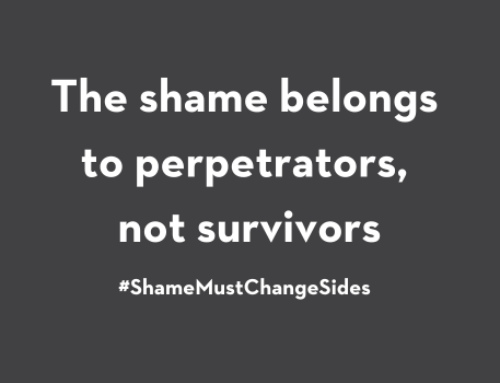This post was originally published on pamelacross.ca. Pamela is a member of the Gender Equality Network Canada.
Canada’s landscape has been strewn with domestic violence homicides this year, with the number of women killed already significantly higher than it usually is for the entire year. And, it must be remembered, the number of women killed is only the tip of the iceberg of the number of women subjected to abuse in their relationships.
Many of those women, whether still in an abusive relationship, on their way out of it or already establishing themselves separate from their abuser, work outside the home. Both the abuse itself and the impact of it can enter a woman’s workplace. Her abuser may stalk her as she comes and goes from work, harass her while she is working, threaten her and/or her coworkers and even enter the workplace to physically harm her. In extreme situations, women are killed at work by their partner or former partner.
As a result, the woman may be distracted, have unexplained absences, come to work with injuries or need to take time away from work to address legal, medical and other issues; all of which can affect her job performance and possibly even her ability to hold on to her employment.
What we know
In 2014, the Centre for Research and Education on Violence Against Women and Children (CREVAWC) at Western University and the Canadian Labour Congress partnered to conduct a groundbreaking survey about domestic violence and work.
The survey elicited responses from almost 8,500 workers across the country. One-third of respondents indicated they were in an abusive relationship. Of those, 82% said it had a negative impact on their work performance. 40% told the researchers that the abuse interfered with their ability to get to work, 10% reported losing jobs because of the abuse and more than 50% said that the abuse continued at or near their workplace.
This research laid the groundwork for political advocacy to change employment legislation to better protect victims of domestic violence.
Keeping safe at work
Earlier this month, the federal government announced that it is introducing changes to the Canada Labour Code to provide some victims of domestic violence with up to 10 days of leave per calendar year. Workers who qualify will be paid for five of those 10 days. This leave time is intended to provide time for victims to seek medical assistance, meet with a lawyer, find housing and otherwise cope with their situation.
The new legislation will cover approximately 900,000 private sector employees who work in federally regulated workplaces, such as banks, telecommunication and air and rail travel. Government employees are not covered by this initiative, but can seek domestic violence leave through their collective bargaining process. PSAC, the Public Service Alliance of Canada, has indicated that this will be a top priority in its next round of negotiations.
Provinces ahead of the feds
In Canada, many provinces have already introduced domestic violence leave to their employment standards legislation.The leaves vary somewhat from jurisdiction to jurisdiction, with some (Alberta and Saskatchewan) offering protected unpaid leave and others offering a combination of paid and unpaid protected leave.
In Ontario, for instance. a victim of domestic or sexual violence can take up to 10 days as well as 15 weeks of job-protected leave, with the first five days of that leave being paid. Manitoba, Nova Scotia, New Brunswick and Quebec offer variations on this approach.
Bringing domestic violence out of the shadows and into the open in workplaces across the country will help to end the stigma associated with intimate partner abuse; letting employees know they are supported by their employer will have a positive impact on productivity.
These are important steps to assisting women develop and maintain financial security so their decisions are not driven by their need to remain with an abuser out of economic dependency.
Learn More:
- How Gender-Based Violence Impacts Mental Health
- 3 Reasons Seniors are Facing More Debt than Ever – and May Be Vulnerable to Abuse
- How to Support Survivors of Sexual Violence
Take Action:
- Sign up for our e-newsletter to have our latest stories and resources sent to your inbox.
- Follow us on Facebook and Twitter to join a national conversation about empowering girls.







